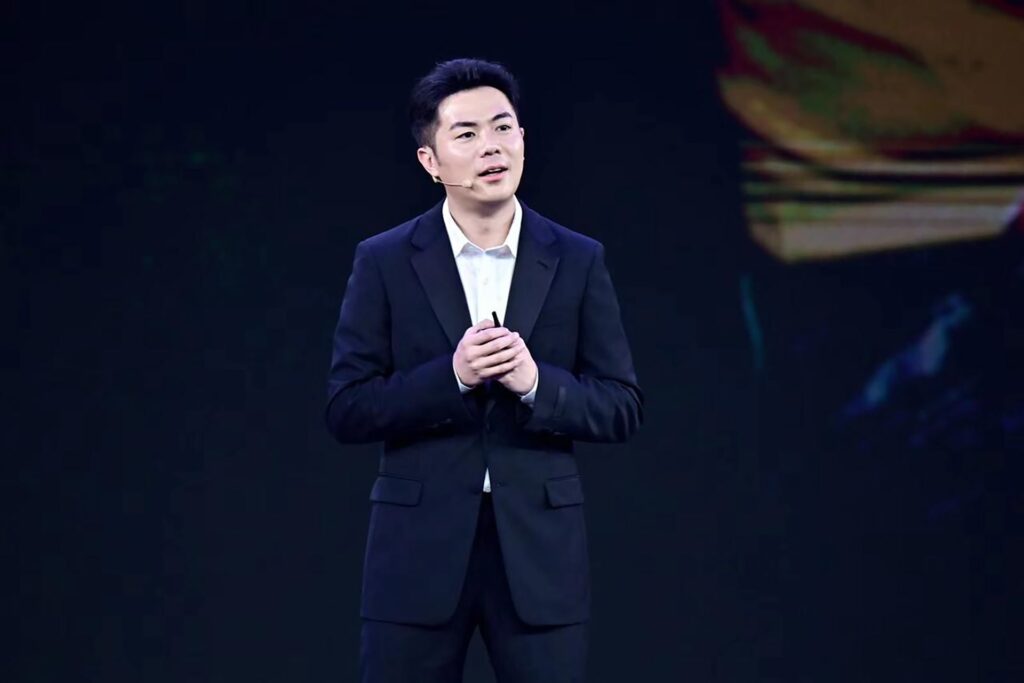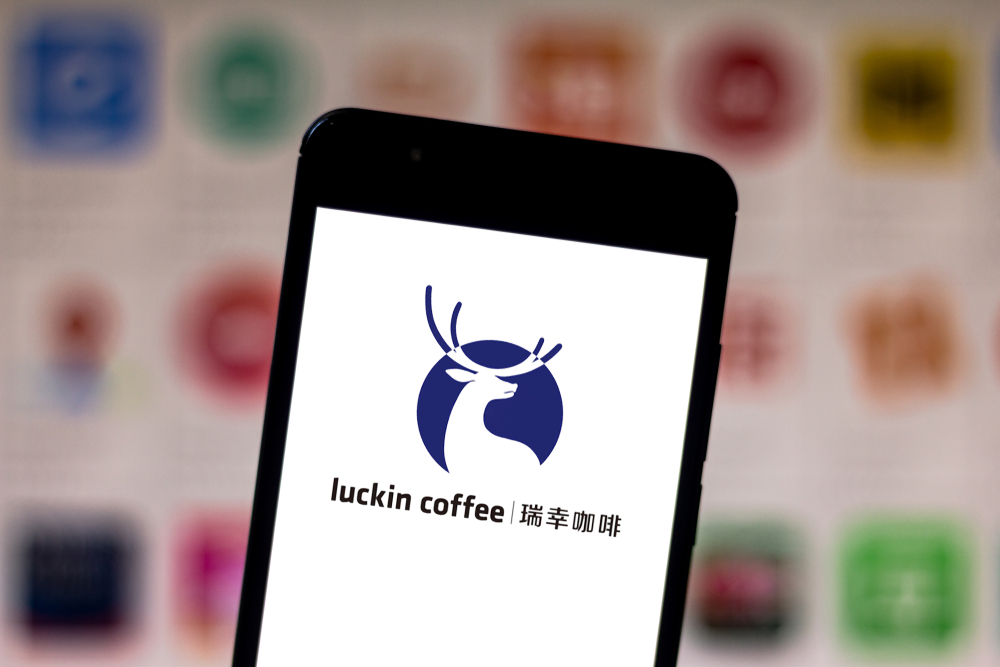In 2017, inside a modest 40-square-meter office, a 22-year-old jotted down an audacious goal: “To serve consumers in 100 countries.”
Even now, in 2025, not even coffee giant Starbucks has crossed that threshold. Yet back in 2017, this ambitious young man had only just launched his tea brand from a nondescript storefront in southwest China.
Fast forward eight years, and that bold vision is no longer just a distant dream. The young man is Zhang Junjie, and his company is Chagee.

In the early hours of March 26, Chinese-style tea chain Chagee took a significant step toward that goal by filing its prospectus with the US Securities and Exchange Commission (SEC). Its stock code, “CHA,” is derived from the pinyin for “tea.” With this filing, Chagee is now one step closer to its long-awaited US IPO.
2024 was a banner year for Chagee. According to the prospectus, Chagee’s gross merchandise value (GMV) for 2024 reached RMB 29.5 billion (USD 4.1 billion), a 173% increase from the previous year. The company expanded its global store count to 6,440 locations, up 83% year-on-year (YoY). Additionally, Chagee recorded RMB 12.41 billion (USD 1.7 billion) in revenue for 2024, reflecting a 167.4% YoY increase, with net profits soaring by 213.3% to RMB 2.52 billion (USD 352.8 million).
This thriving business, with high revenue and profit growth, also boasts monthly average GMV of around RMB 512,000 (USD 71,680), far superior to its peers, making Chagee the most closely watched player in its segment last year. Not to mention, the company has captured widespread attention thanks to its founder’s journey and ambition to take on Starbucks.
The industry has witnessed a wave of IPOs this year. GoodMe and Mixue Bingcheng went public on the Hong Kong Stock Exchange, Auntea Jenny restarted its Hong Kong IPO process, and Chagee has now applied for a US listing. Chagee’s prospectus highlights how its success stems from a strategy centered on creating signature products and aggressive marketing. However, as the company races ahead, it now faces the challenge of declining same-store GMV growth.
How popular can a signature product get?
Chagee is widely considered the pioneer of the tea latte category. This category, which the brand coined as “raw-leaf fresh milk tea,” primarily combines brewed tea with fresh milk. Since 2021, this has quickly become Chagee’s signature product.
According to the prospectus, as of 2024, 91% of Chagee’s domestic GMV was generated by its tea latte category, with approximately 61% coming from its three bestselling products.
How does this compare? Take Mixue as an example. In the first nine months of 2024, its top five evergreen products accounted for around 41.2% of total domestic cup sales. This means that Chagee relies more heavily on a few key products compared to Mixue, and far more than other key players such as GoodMe and Heytea, whose product structures are more diversified.
Among these, Chagee’s undisputed top performer is “Boya Juexian,” a jasmine tea latte that has sold over 600 million cups in the past three years.
In addition to its bestsellers, Chagee’s streamlined menu and minimal product launches have helped the company maintain an incredibly low SKU count. In 2024, Chagee introduced just ten new products and refined three existing ones. By contrast, Luckin Coffee launched 119 SKUs in 2024, while Starbucks China introduced 27 new products.
This focus on signature products has clear advantages. When the product lineup is kept simple, supply chain standardization and store efficiency naturally improve. According to the prospectus, Chagee’s inventory turnover period is only 5.3 days—the lowest among tea chains with over 1,000 stores. Of course, this strategy came through trial and error. In its early days, Chagee followed trends by offering fruit teas and European-style breads, only to abandon them after discovering the complexities they added to the supply chain.
At the store level, a streamlined SKU strategy leads to more consistent product quality and higher labor efficiency. Today, it reportedly takes just eight seconds to prepare a Chagee beverage, and with automated packaging, a drink can be ready to go in as little as 40 seconds. Automation has also resolved employee training challenges, eliminating the traditional 15–30 day training period and the need to memorize lengthy ingredient lists. With just a quick scan of a cup’s QR code, even new hires can operate smoothly.
This unparalleled efficiency has propelled Chagee’s single-store revenue during its peak year. In 2024, the top 30% of Chagee’s stores sold around 1,300 cups per day on average—more than triple the industry standard.
Chagee’s formula of simple products, an efficient supply chain, and standardized operations has allowed it to scale rapidly over the past three years, emerging as a dark horse in the industry. However, as consumer preferences shift and competitors constantly roll out new offerings, Chagee’s tight focus on signature products may come with inherent risks.
Bold and aggressive in marketing
2024 was also Chagee’s loudest year.
Elevator advertising, once the playground of internet companies, became a focal point for Chagee. Few tea brands have blanketed office buildings and residential communities with advertisements like Chagee did, reaching eyeballs around the clock.
Chagee didn’t stop at offline channels. According to iResearch, among tea chains with over 1,000 stores in China, Chagee topped the industry in 2024 in terms of engagement, search growth, and trending mentions across Xiaohongshu, Douyin, and Weibo.
Behind this near-ubiquitous exposure lies Chagee’s massive marketing spend. According to the prospectus, Chagee’s marketing expenses surged from RMB 73.6 million (USD 10.3 million) in 2022 to RMB 2.6 billion (USD 364 million) in 2023, and then to RMB 11 billion (USD 1.5 billion) in 2024. These figures represented 15%, 5.6%, and 8.9% of the company’s net income for the respective years, amounting to a total of over RMB 14 billion (USD 2 billion) over three years.
In comparison, Mixue’s marketing expense ratio stood at 5.7%, 6.5%, and 6.4% from 2022–2024, while GoodMe’s was 4.8% and 4.4% in 2022 and 2023, respectively.
Chagee’s aggressive marketing quickly elevated its brand awareness beyond its store count.
This high-profile approach extended to Chagee’s store format strategy. While Heytea was downsizing its store footprint, Chagee took the opposite route, emulating Starbucks’ focus on enhancing the in-store experience by opening larger stores. A typical Chagee store spans 60–80 square meters, and flagship stores in major cities can exceed 100 square meters. To enhance the sensory experience, Chagee even installs tea aroma diffusers in its stores.
Most of these stores are located in China’s most economically active regions. As of December 31, 2024, Chagee operated 696 stores in tier-one cities and 3,110 stores in emerging tier-one and tier-two cities. Notably, Shanghai, home to 245 stores, had the highest store count, with 184 new stores added in 2024 alone.
Chagee’s meticulous approach to store location is also noteworthy. When Chagee expanded into Hong Kong six months ago, a local real estate professional told 36Kr:
“Chagee only wants the best commercial districts and dine-in stores. It’s even willing to lease prime streetfront locations in space-constrained Hong Kong just to create a showroom.”
Chagee’s marketing strategy has always been distinctive. Unlike typical F&B companies, Chagee invested heavily in brand building early on, with founder Zhang personally involved in managing the brand’s marketing initiatives. One of the most notable moves was a switch in packaging style from traditional Chinese aesthetics to a luxury-inspired look.
“In hindsight, Chagee placed the right bet by pouring resources into marketing before achieving scale,” a tea industry investor told 36Kr.
Hidden risks, new narratives
For the past few years, growth has been the term most associated with Chagee. From the first quarter 2023 to the second quarter of 2024, Chagee’s same-store GMV growth consistently exceeded 35%, peaking at a staggering 156.9% in the final quarter of 2023.
But now, the numbers tell a different story.
The prospectus reveals that starting from the third quarter last year, Chagee’s same-store GMV growth slowed significantly, with YoY growth slipping to just 1.5%. By Q4, this metric had even dipped into negative territory, recording a rare 18.4% decline.
Store saturation is a key factor behind this deceleration. Chagee’s stores are heavily concentrated in the more affluent southern regions of China, particularly tier-one and tier-two cities. According to Canyan Data, Chagee has the highest number of stores in Guangdong, Zhejiang, and Jiangsu, with 617, 609, and 574 stores, respectively, accounting for 10.13% of the total store network.
The prospectus data further reveals that in Q4 2024, Chagee’s GMV in eastern and southern China—its most saturated regions—saw quarter-on-quarter declines of 27.3% and 14.7%, respectively.
Adding to the pressure, competitors are circling, eager to claim a share of Chagee’s business. In the second half of 2024, Luckin Coffee introduced “Qingqing Moli,” a product strikingly similar to Chagee’s Boya Juexian in both taste and ingredients but priced significantly lower. The product was even dubbed the RMB 9.9 version of the Chagee drink by the public.
Falling same-store GMV growth threatens to prolong the payback period for franchisees—a concern that is amplified for high-investment brands like Chagee. Franchise fees for Chagee stores are already among the highest in the industry, and with its preference for larger stores, expenses related to rent, labor, and equipment are significantly higher. According to 36Kr, opening a Chagee store costs around RMB 600,000 (USD 84,000), but the price tag for a third-generation store can climb as high as RMB 1.5 million (USD 210,000).
That said, Chagee’s rapid store expansion and relatively short operational history mean that the company has maintained an exceptionally low closure rate. In 2023 and 2024, the closure rate was 0.5% and 1.5%, respectively.
After years of rapid domestic growth, Chagee is now eyeing international markets. As early as 2018, the company established an overseas division. According to the prospectus, part of the proceeds from the IPO will be used to invest in technology, product innovation, and expansion of store networks in China and abroad, as well as to build an international supply chain.
Currently, most of Chagee’s overseas stores are concentrated in Southeast Asia and the US. As of December 31, 2024, Chagee operated 156 stores in Southeast Asia. 148 of them are located in Malaysia, partly fueled by leveraging the star power of local sports icon Lee Chong Wei as a brand ambassador. Meanwhile, Chagee’s first US store is set to officially open in Los Angeles this spring.
Today, Chagee, with RMB 12.41 billion (USD 1.7 billion) in annual revenue, has just secured a seat at the table among leading tea brands. Yet, freshly brewed tea—a trend-focused product—faces the need for constant reinvention. Whether Chagee’s tea lattes can achieve enduring success remains uncertain, and whether its premium pricing strategy can sustain growth is another question. The real challenges for Chagee lie ahead.
KrASIA Connection features translated and adapted content that was originally published by 36Kr. This article was written by Zhong Yixuan for 36Kr.

